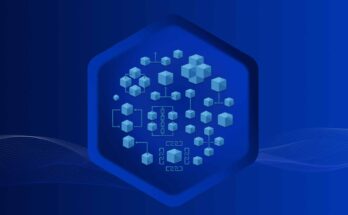As technology continues to evolve, two of the most transformative innovations of our time—Artificial Intelligence (AI) and Blockchain—are beginning to intersect. This convergence promises to revolutionize various industries by enhancing efficiency, security, and transparency. In this article, we will explore the intersection of AI and Blockchain, discussing what to expect in the coming years and how these technologies can work together to create innovative solutions.
Understanding AI and Blockchain
Artificial Intelligence (AI) refers to the simulation of human intelligence in machines that are programmed to think and learn. AI can analyze vast amounts of data, recognize patterns, and make decisions with minimal human intervention.
Blockchain, on the other hand, is a decentralized, distributed ledger technology that securely records transactions across multiple computers. It ensures transparency and security by making it nearly impossible to alter or delete recorded data without consensus from the network.
Key Benefits of Combining AI and Blockchain
- Enhanced Data Security
One of the primary benefits of integrating AI and Blockchain is enhanced data security. Blockchain technology provides a secure and immutable record of transactions, while AI can analyze this data to identify potential threats and vulnerabilities. Together, they can create a robust security framework that protects sensitive information from cyberattacks.
- Improved Data Integrity
The combination of AI and Blockchain ensures data integrity. Blockchain guarantees that the data recorded is accurate and tamper-proof, while AI can validate and analyze this data in real-time. This synergy can be particularly beneficial in industries such as healthcare, where accurate data is crucial for patient care and research.
- Streamlined Processes
Integrating AI with Blockchain can streamline various processes by automating tasks and reducing the need for intermediaries. For example, in supply chain management, AI can analyze data to optimize logistics, while Blockchain can provide a transparent record of transactions. This combination can lead to faster and more efficient operations.
- Decentralized AI Models
The intersection of AI and Blockchain allows for the development of decentralized AI models. Instead of relying on a central authority to manage AI algorithms, Blockchain can enable a distributed network of nodes to collaborate on AI training. This decentralization can enhance the robustness and fairness of AI models, as they are trained on diverse datasets from multiple sources.
- Smart Contracts and Automation
Smart contracts are self-executing contracts with the terms of the agreement directly written into code on the Blockchain. By integrating AI, these contracts can become more intelligent and adaptive. For instance, an AI algorithm can analyze data to determine when certain conditions are met, automatically executing the contract without human intervention. This can significantly reduce the time and costs associated with contract management.
Use Cases of AI and Blockchain Integration
- Healthcare
In the healthcare sector, the combination of AI and Blockchain can lead to improved patient outcomes. Blockchain can securely store patient records, while AI can analyze this data to provide personalized treatment recommendations. This integration can enhance data sharing among healthcare providers while ensuring patient privacy.
- Finance
The financial industry stands to benefit significantly from the intersection of AI and Blockchain. AI can analyze transaction data to detect fraudulent activities, while Blockchain can provide a secure and transparent record of all transactions. This synergy can enhance security and trust in financial systems.
- Supply Chain Management
In supply chain management, AI and Blockchain can work together to optimize logistics and ensure transparency. Blockchain can provide a tamper-proof record of each step in the supply chain, while AI can analyze this data to identify inefficiencies and suggest improvements.
- Identity Verification
Combining AI and Blockchain can enhance identity verification processes. Blockchain can securely store identity information, while AI can analyze patterns to detect fraudulent identities. This integration can streamline onboarding processes in various industries, including finance and healthcare.
- Energy Sector
In the energy sector, AI and Blockchain can facilitate decentralized energy trading. Blockchain can securely record energy transactions, while AI can analyze consumption patterns to optimize energy distribution. This integration can lead to more efficient energy management and reduced costs for consumers.
Challenges to Overcome
While the intersection of AI and Blockchain presents numerous opportunities, several challenges must be addressed:
-
Scalability: Both AI and Blockchain face scalability issues. As the volume of data increases, ensuring that both technologies can handle this growth efficiently is crucial.
-
Regulatory Concerns: The integration of AI and Blockchain raises regulatory questions, particularly regarding data privacy and security. Clear guidelines will be necessary to ensure compliance and protect users.
-
Interoperability: For AI and Blockchain to work effectively together, interoperability between different Blockchain networks and AI systems must be established.
-
** Public Perception**: The public’s understanding and acceptance of both AI and Blockchain technologies can impact their adoption. Education and awareness campaigns are essential to build trust and encourage usage.
Future Outlook
The future of AI and Blockchain integration looks promising. As both technologies continue to mature, we can expect to see innovative applications that enhance efficiency, security, and transparency across various sectors. Organizations that embrace this convergence will likely gain a competitive edge, driving growth and innovation in their respective industries.
Conclusion
The intersection of AI and Blockchain is set to transform the technological landscape. By leveraging the strengths of both technologies, businesses can create more secure, efficient, and transparent systems. As we move forward, it will be crucial to address the challenges and harness the potential of this powerful combination to unlock new opportunities and drive progress in the digital age.




